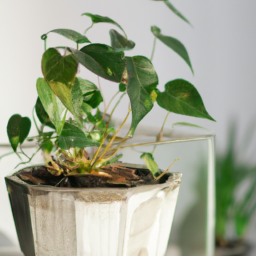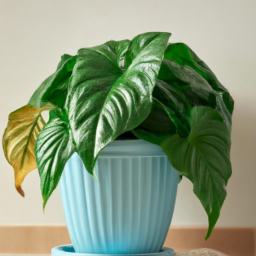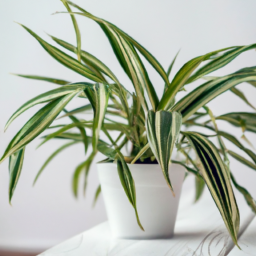
Are you looking to bring some greenery into your home but not sure where to start? If you’re new to the world of indoor plants, you might be feeling a bit overwhelmed by all the options out there. That’s why we’ve put together a guide to help you find the best indoor plants for beginners. Whether you have a green thumb or not, there’s a perfect plant out there for you. Let’s dive in and explore some easy-to-care-for options that will add a touch of nature to your living space.
Benefits of Indoor Plants for Beginners
Improved Air Quality
Indoor plants are not only aesthetically pleasing, but they also play a crucial role in improving air quality within your home. They act as natural air purifiers by absorbing harmful toxins and releasing oxygen during photosynthesis. This can help reduce the levels of pollutants such as formaldehyde, benzene, and trichloroethylene in the air, creating a healthier living environment for you and your family.
In addition to purifying the air, indoor plants can also help to increase humidity levels in your home. This can be particularly beneficial during the winter months when indoor heating systems can dry out the air, leading to respiratory issues and dry skin. By introducing a few easy-to-care-for plants into your living space, you can create a more comfortable and breathable atmosphere.
Furthermore, studies have shown that having indoor plants can have a positive impact on mental health and well-being. The presence of greenery indoors has been linked to reduced stress levels, improved mood, and increased productivity. By incorporating plants into your home, you can create a calming and relaxing environment that promotes overall wellness.
Easy Maintenance
One of the main reasons why indoor plants are ideal for beginners is their ease of maintenance. There are many varieties of plants that require minimal care and attention, making them perfect for those who are new to gardening. Some popular low-maintenance options include succulents, snake plants, and pothos, which thrive in a variety of indoor conditions and can tolerate occasional neglect.
To ensure the health and longevity of your indoor plants, it is important to provide them with the proper care. This includes watering them regularly, but not overwatering, as this can lead to root rot. It is also important to place your plants in an area where they can receive adequate sunlight, as most indoor plants require some level of natural light to thrive. By following these basic care guidelines, you can enjoy the beauty of indoor plants without the stress of high maintenance.
In addition to their easy care requirements, indoor plants can also be a cost-effective way to enhance your living space. Compared to other home decor options, such as artwork or furniture, plants are relatively inexpensive and can add a touch of nature to any room. With a little creativity, you can use plants to create a personalized and inviting atmosphere that reflects your unique style and personality.
Health Benefits
In addition to improving air quality and reducing stress, indoor plants offer a range of health benefits for beginners. Studies have shown that being surrounded by plants can help to lower blood pressure, reduce fatigue, and boost overall well-being. The presence of greenery indoors has also been linked to faster recovery times for patients in hospitals and other healthcare settings.
Furthermore, indoor plants can help to reduce the risk of certain illnesses and allergies by filtering out airborne pollutants and allergens. This can be particularly beneficial for individuals with respiratory conditions such as asthma or allergies, as plants can help to remove irritants from the air and create a cleaner and healthier indoor environment. By incorporating plants into your home, you can support your overall health and well-being in a natural and sustainable way.
Overall, indoor plants offer a range of benefits for beginners, from improved air quality and easy maintenance to enhanced well-being and health benefits. By adding a few plants to your living space, you can create a more inviting and harmonious environment that promotes relaxation and happiness. Whether you are looking to brighten up a room or improve your overall quality of life, indoor plants are a simple and effective way to enhance your home and well-being.

Top Easy-to-Care-for Indoor Plants for Beginners
Choosing the Right Indoor Plants
When it comes to choosing the best indoor plants for beginners, it’s important to consider a few key factors. First and foremost, you’ll want to think about the amount of light that your space receives. Some plants thrive in bright, indirect light, while others are better suited to low-light conditions. Additionally, you’ll want to consider how much time and effort you’re willing to put into caring for your plants. Some varieties are more high-maintenance than others, so it’s important to choose plants that fit your lifestyle.
One great option for beginners is the spider plant. Spider plants are incredibly easy to care for and can thrive in a variety of lighting conditions. They also have a unique, cascading shape that can add visual interest to any space. Another excellent choice is the pothos plant, which is known for its ability to purify the air and its resilience to neglect. Pothos plants are great for beginners because they can survive in low-light conditions and only need to be watered occasionally.
If you’re looking for a plant that’s a bit more visually striking, consider the snake plant. Snake plants have tall, sword-shaped leaves that add a touch of drama to any room. They’re also incredibly low-maintenance and can survive in a variety of lighting conditions. Another great option is the peace lily, which is known for its elegant white flowers and its ability to thrive in low-light conditions. Peace lilies are also excellent air purifiers, making them a great choice for beginners who want to improve the air quality in their home.
Caring for Your Indoor Plants
Once you’ve chosen the perfect indoor plants for your space, it’s important to know how to care for them properly. One of the most important things to remember is to water your plants regularly, but not too much. Overwatering is one of the most common mistakes that beginners make, so be sure to check the soil moisture before watering your plants. Most indoor plants prefer to dry out slightly between waterings, so it’s best to err on the side of underwatering rather than overwatering.
In addition to watering, it’s important to provide your plants with the right amount of light. Most indoor plants prefer bright, indirect light, so be sure to place them near a window where they can receive plenty of sunlight. If you have low-light conditions in your home, consider investing in a grow light to help your plants thrive. It’s also important to regularly dust your plant’s leaves and check for any signs of pests or disease. Keeping your plants clean and healthy will help them grow and thrive for years to come.
Another important aspect of caring for indoor plants is to repot them when necessary. As your plants grow, they may outgrow their containers and become root-bound. When this happens, it’s important to repot your plants into larger containers to give their roots room to spread out. Be sure to use a high-quality potting mix and provide your plants with plenty of drainage to prevent root rot. Repotting your plants regularly will help them stay healthy and continue to thrive in your home.
Troubleshooting Common Issues
Even the best indoor plants for beginners can run into problems from time to time. If you notice that your plants are looking droopy or discolored, it’s important to take action quickly to prevent further damage. One common issue that beginners run into is overwatering, which can lead to root rot and other problems. If you suspect that your plants are being overwatered, be sure to let the soil dry out completely before watering again. You can also try repotting your plants into a container with better drainage to help prevent future issues.
Another common issue that beginners face is pests, such as spider mites or mealybugs. If you notice any signs of pests on your plants, it’s important to take action quickly to prevent them from spreading. You can try using insecticidal soap or neem oil to get rid of pests, or simply wipe down your plant’s leaves with a damp cloth to remove them manually. It’s also important to regularly inspect your plants for any signs of disease, such as yellowing leaves or moldy soil. If you notice any issues, be sure to address them promptly to prevent them from spreading to other plants.
Overall, caring for indoor plants can be a rewarding and enjoyable experience for beginners. By choosing the right plants for your space, providing them with the proper care and attention, and addressing any issues that arise promptly, you can create a beautiful and thriving indoor garden that will bring joy and beauty to your home for years to come. Remember to enjoy the process and don’t be afraid to experiment with different plants and growing techniques to find what works best for you.

Tips for Choosing the Best Indoor Plants for Beginners
Understanding Light Requirements
When it comes to choosing the best indoor plants for beginners, one of the most important factors to consider is the light requirements of the plant. Different plants have different preferences when it comes to sunlight, so it’s essential to choose a plant that will thrive in the lighting conditions of your home.
Some plants, like succulents and cacti, thrive in bright, direct sunlight, while others, like ferns and peace lilies, prefer indirect light. If you have a room that receives a lot of natural light, you may want to consider plants that require bright light. On the other hand, if your home doesn’t get a lot of natural light, you may want to opt for plants that can thrive in low-light conditions.
It’s also essential to consider the direction of the windows in your home. South-facing windows typically receive the most sunlight, while north-facing windows receive the least. East and west-facing windows fall somewhere in between. By understanding the light requirements of different plants and the lighting conditions in your home, you can choose indoor plants that are more likely to thrive.
Considering Watering Needs
Another crucial factor to consider when choosing indoor plants for beginners is the watering needs of the plant. Overwatering is one of the most common mistakes that beginners make when caring for indoor plants, so it’s essential to choose plants that are forgiving of occasional lapses in watering.
Plants like snake plants and pothos are known for being relatively low-maintenance and can tolerate occasional underwatering. On the other hand, plants like ferns and peace lilies require more consistent watering and higher humidity levels. If you tend to forget to water your plants or are new to plant care, it’s best to choose plants that are more forgiving of neglect.
It’s also essential to consider the type of potting mix that your plant requires. Some plants, like succulents and cacti, require well-draining soil to prevent root rot, while others, like ferns and orchids, prefer a more moisture-retentive mix. By understanding the watering needs of different plants and choosing plants that align with your watering habits, you can set yourself up for success as a beginner indoor plant parent.
Considering Space and Aesthetic Preferences
When choosing indoor plants for beginners, it’s also essential to consider the space available in your home and your aesthetic preferences. Some plants, like fiddle leaf figs and monstera, can grow quite large and may not be suitable for small spaces. If you have limited space, you may want to opt for smaller plants like pothos or spider plants that can be displayed on shelves or countertops.
It’s also essential to consider the aesthetic of your home when choosing indoor plants. Some plants, like succulents and air plants, have a modern and minimalist look, while others, like ferns and calatheas, have a more tropical and lush appearance. By choosing plants that complement the style of your home, you can create a cohesive and visually appealing indoor plant display.
In conclusion, when choosing the best indoor plants for beginners, it’s essential to consider the light requirements, watering needs, space, and aesthetic preferences. By taking these factors into account and choosing plants that align with your lifestyle and home environment, you can set yourself up for success as a beginner indoor plant parent. Happy planting!
Essential Points
If you’re new to the world of indoor plants and want to add some greenery to your space, there are a few easy-to-care-for options that are perfect for beginners. One of the best indoor plants for beginners is the pothos plant, also known as Devil’s Ivy. This plant is incredibly resilient and can thrive in a variety of lighting conditions, making it perfect for those who may not have the greenest thumb. Pothos plants are also great for purifying the air in your home, making them a beautiful and functional addition to any room.
Another great option for beginners is the snake plant, also known as mother-in-law’s tongue. This plant is virtually indestructible and can survive in low light and with infrequent watering. Snake plants are also known for their air-purifying abilities, making them a great choice for those looking to improve the air quality in their home. With their unique, upright leaves and easy care requirements, snake plants are a great choice for beginners looking to add some greenery to their space without a lot of maintenance.
Top FAQs:
Q1: What are some easy-to-care-for indoor plants for beginners?
A1: Some of the best indoor plants for beginners include pothos, spider plants, snake plants, peace lilies, and ZZ plants. These plants are known for their resilience and ability to thrive in various indoor conditions.
Q2: How often should I water indoor plants as a beginner?
A2: As a beginner, it’s important to check the moisture level of the soil before watering your indoor plants. Generally, most indoor plants should be watered once a week, but be sure to adjust based on the specific needs of each plant.
Q3: What kind of light do indoor plants need?
A3: Most indoor plants require bright, indirect light to thrive. Place your plants near a window where they can receive plenty of natural light without being exposed to direct sunlight, which can cause their leaves to burn.
Q4: How can I prevent common indoor plant problems as a beginner?
A4: To prevent common indoor plant problems like overwatering, make sure your pots have drainage holes to allow excess water to escape. Additionally, regularly dusting your plant’s leaves and checking for pests can help maintain their health.
Q5: What are some signs that my indoor plant needs attention?
A5: Some signs that your indoor plant needs attention include yellowing or browning leaves, wilting, or stunted growth. By regularly monitoring your plants and addressing any issues promptly, you can help them thrive and grow successfully.
Dr. Olivia Green is a botanist with over two decades of experience in indoor plant cultivation. She holds a Ph.D. in Plant Biology and has dedicated her career to researching plant behavior in controlled environments. Dr. Green is passionate about helping plant enthusiasts master the art of indoor gardening through her extensive knowledge and practical insights.


